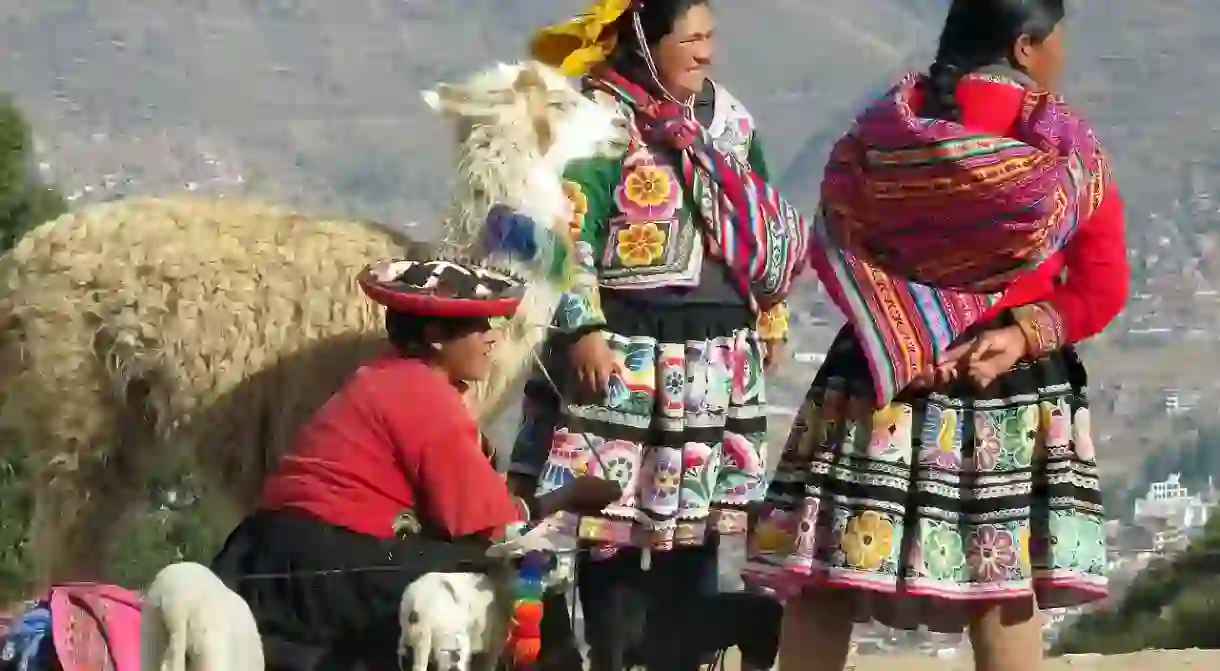How These Traditional Iconic Hats and Outfits are Keeping the Andean Tradition Alive

The people and their vibrant outfits are what will stand out most when you first arrive to Cusco, Peru. As other Andean traditions begin to fade, the colorful jackets and skirts of the city’s Andean women, who walk the streets in their resplendent hats and textiles, keep the spirit and traditions of the Andes alive.
An Andean woman in Cusco sits on the side of the street with her daughters and their two baby alpacas, dressed in the traditional Andean garb: little hats and red vests with brightly colored skirts. Each of them has a finely made textile tied around her neck and slung over her back like a backpack. “Photos, photos, photos!” you can hear them say as you pass. Their outfits have become a prop in the scenery of Cusco, a costume to amuse gringos and travelers. The gringos pass by in waves, crowding around the group to snap some photos. One tourist holds the alpaca like a baby and exclaims to her friends, “Look at how lovely this all is! I love the outfits!”

This is business as usual for these ladies, whose job seems to be posing for photos for tourists, another sad reality of tourism’s effects on this area and its people. What gets lost in this transaction of photos, however, is the courage these women have to continue to represent their cultural past through clothing, something their husbands (at least most of them) have abandoned and do only on special occasions. In the face of an ever globalizing world and a modernizing Peru, which extends even to the most remote parts of the country, these women continue to hold on to their cultural heritage, something that is even more evident when traveling outside of Cusco, to the little pueblitos.

Making textiles during the rein of the Incas was tantamount to story telling or writing. Textiles weren’t just beautiful fabric—they told a story, the history of the Incas. Textiles were also used to record official records and statistics of the entire Incan empire. The textiles and their makers were at the heart of Andean life; today, they are a relic of its past. While the stories are gone and the Inca’s history was wiped out by the Spanish, the textiles remain a great reminder of that past, a link to the great civilization of the Incas and all of their traditions.

When you see these women and their children on the streets, remember that they are not props for photos, but women—brave women—who continue to wear their cultural history with them each day. One of the main links to their past is found in their clothing, a tradition that they refuse to lose.













